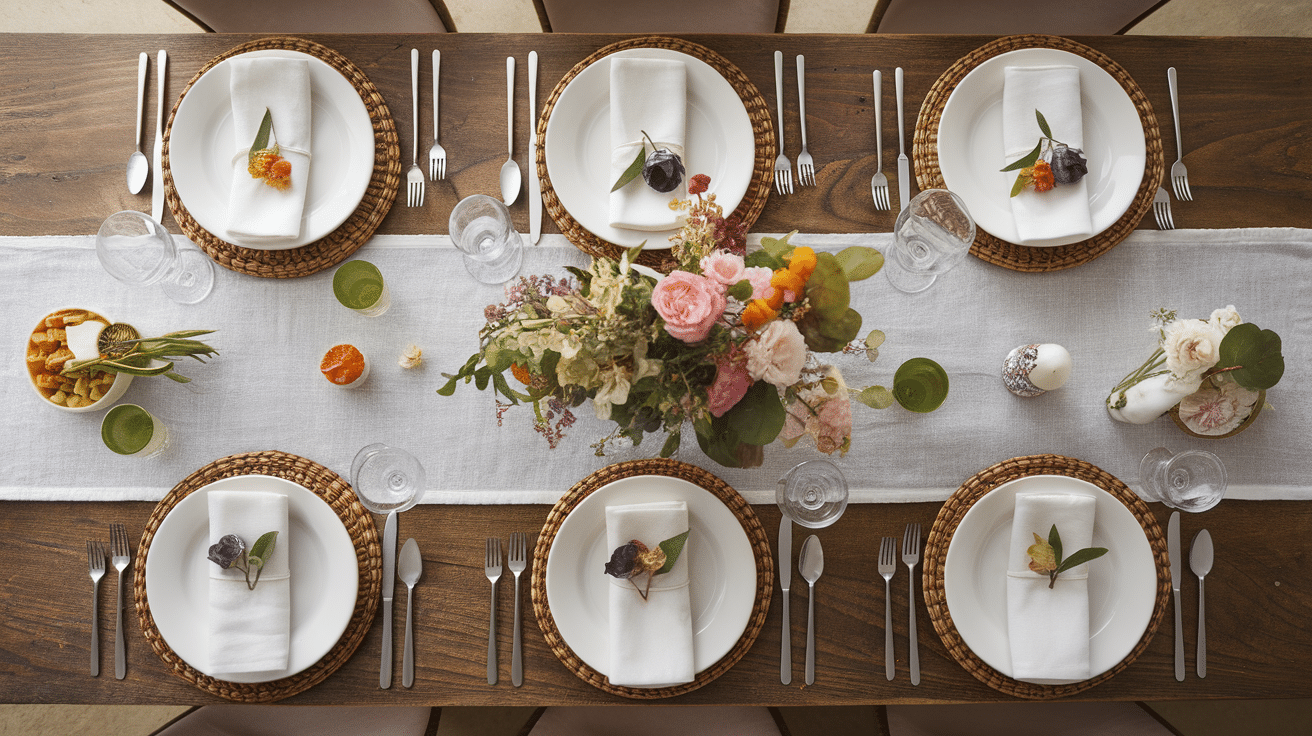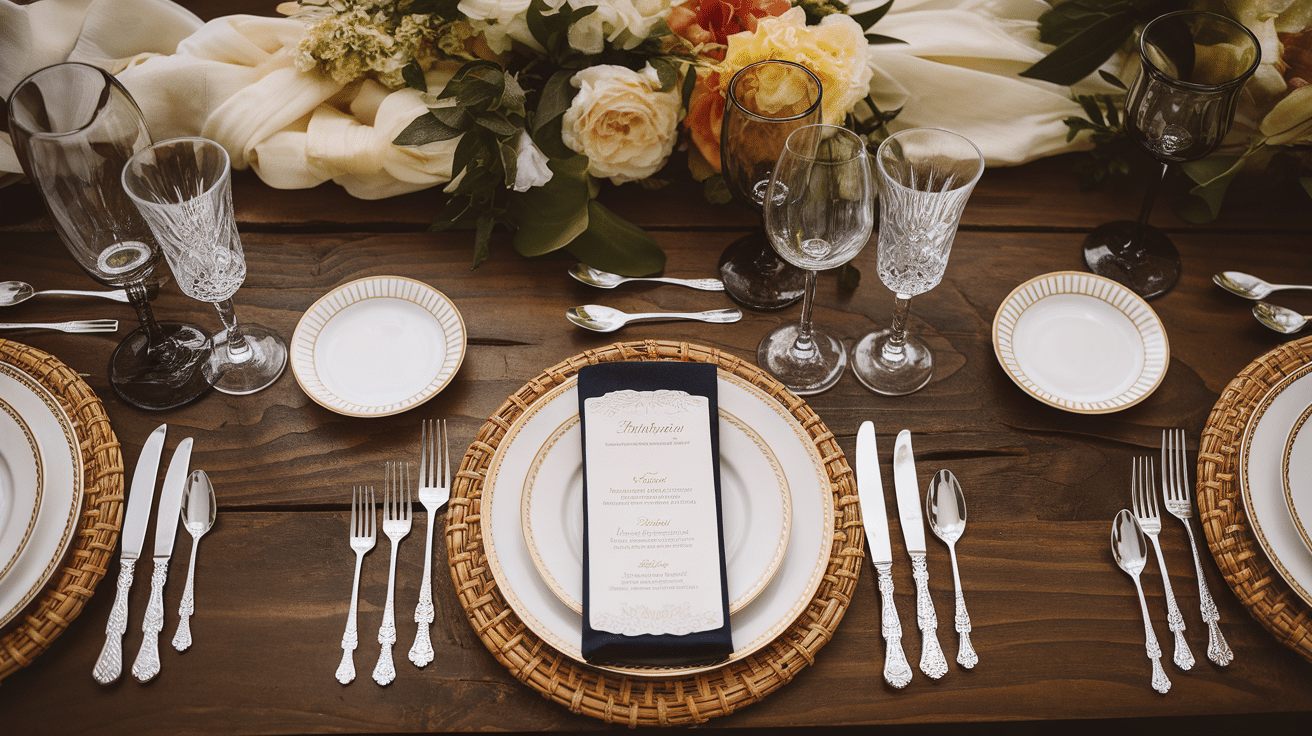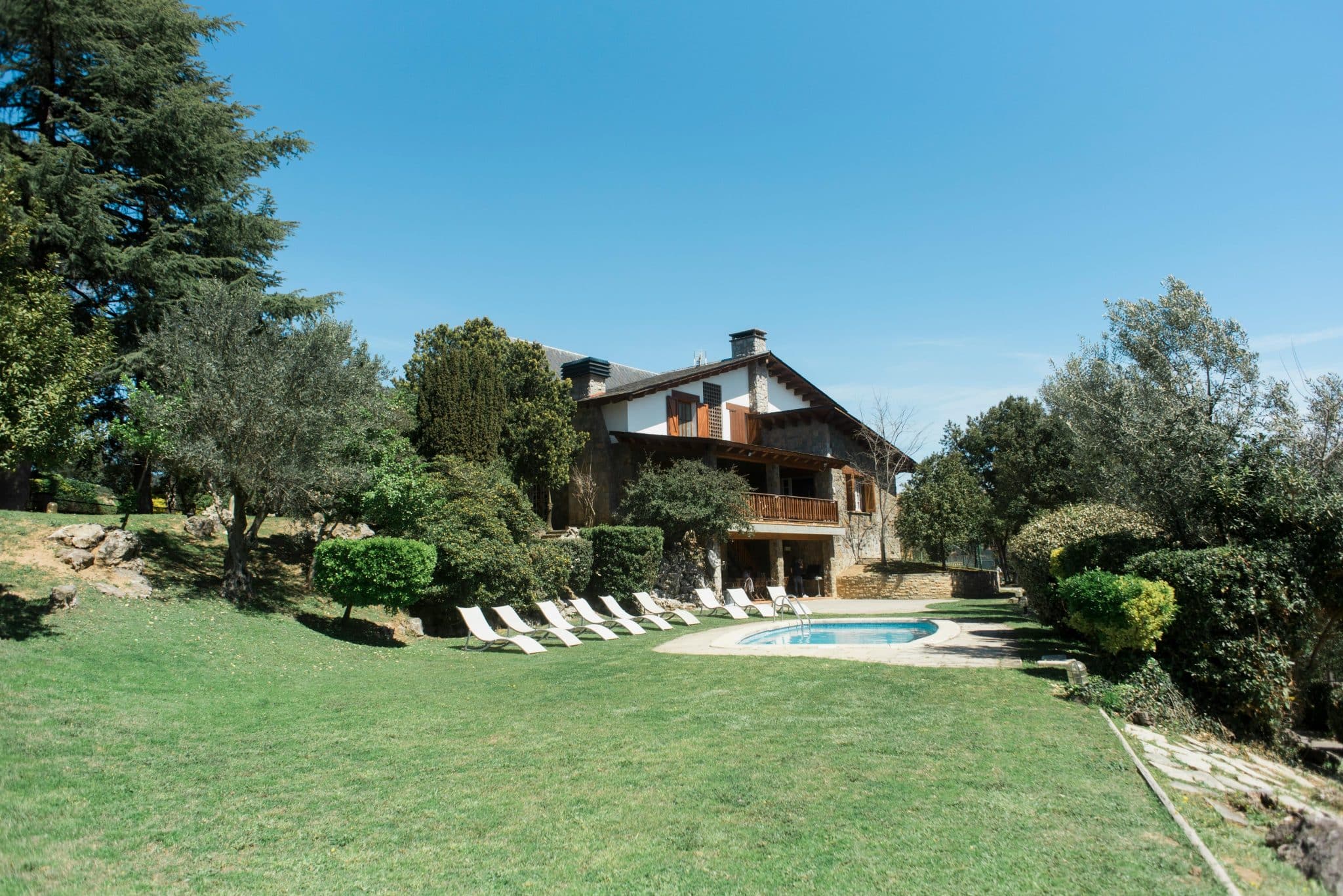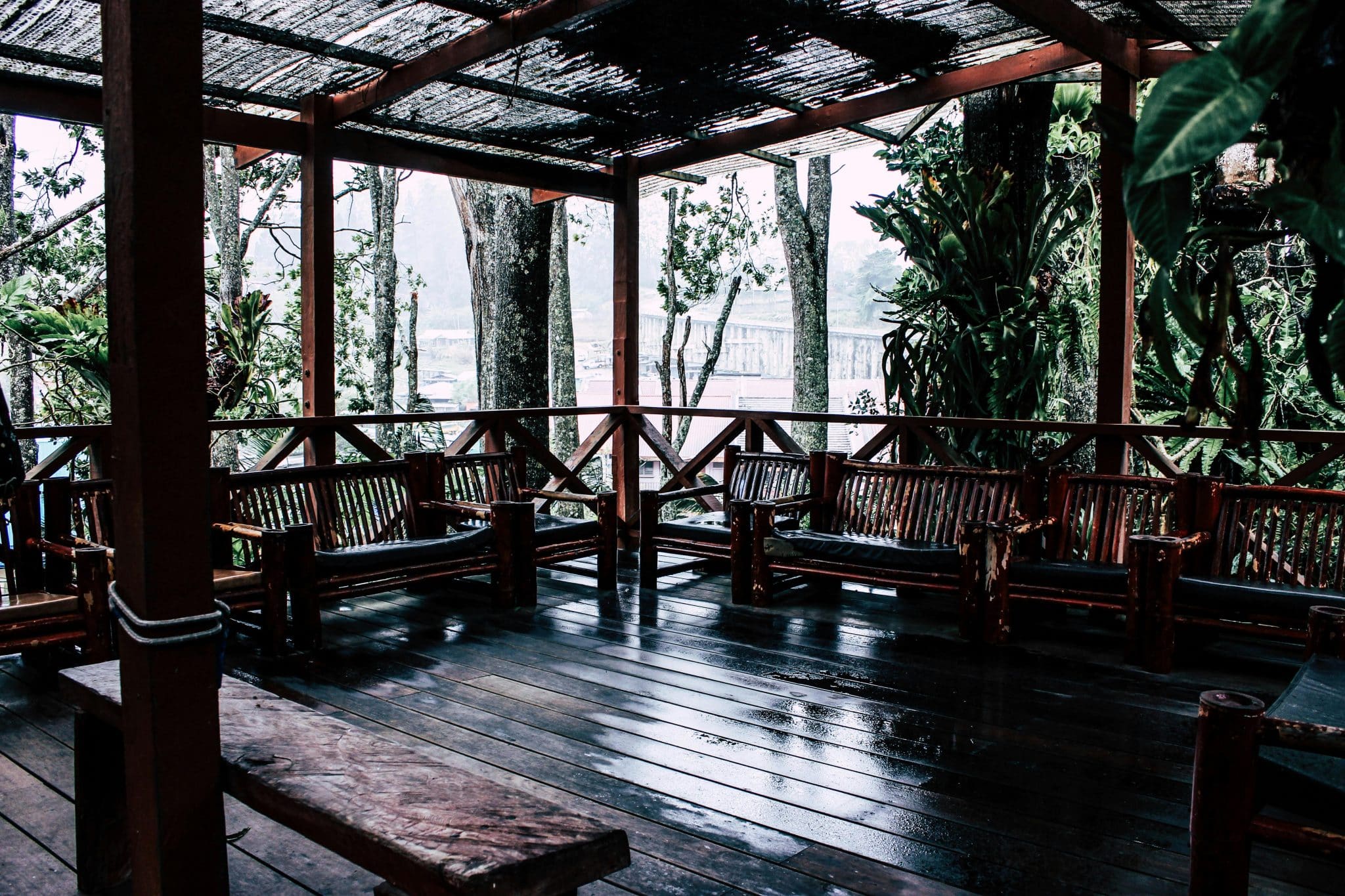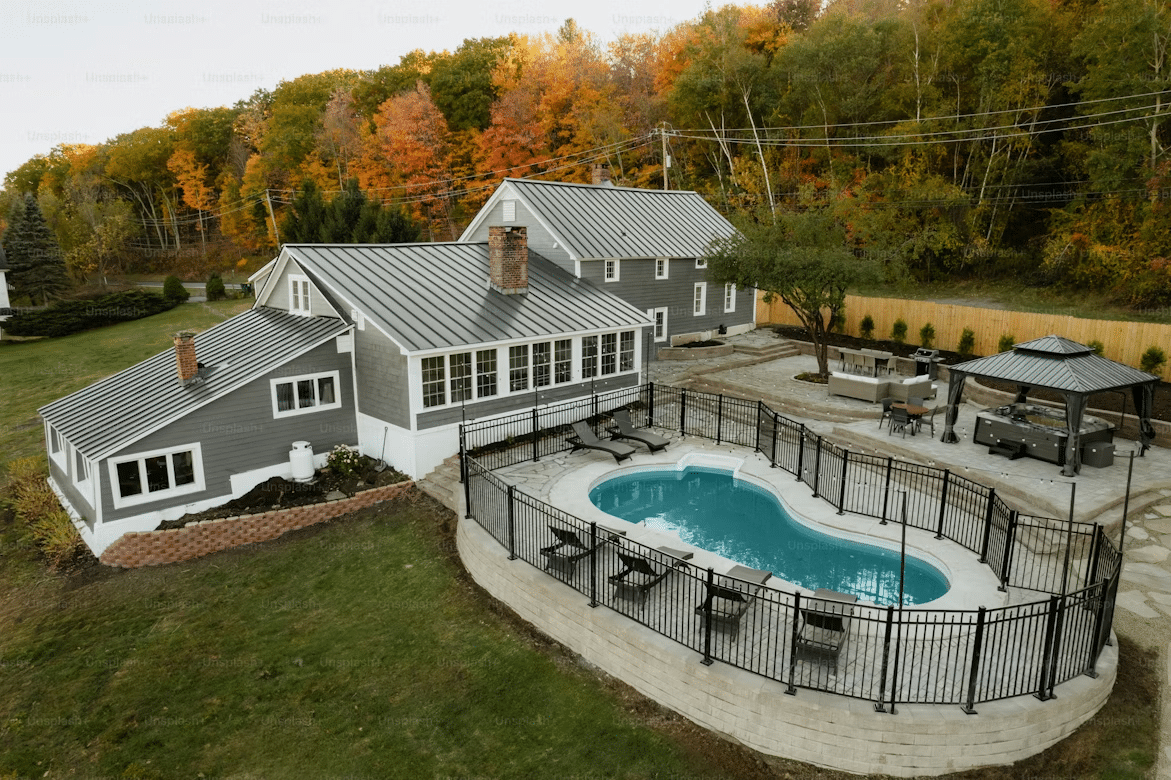Setting an attractive table doesn’t need fancy skills or costly items. With just a few basic techniques, you can create a look that makes guests take notice.
The right placement of plates, glasses, and decorations can turn a basic meal into a special event.
A thoughtful table setup shows guests you care about their experience. It sets the tone for the food and conversation to follow. Your friends will remember not just what they ate, but how the entire evening felt.
Let’s look at some easy ways to make your table stand out without much time or money. These tips work for any occasion, from casual lunches to dinner parties.
Small changes can make big differences in how your table looks and functions. The goal is to make eating together more pleasant for everyone while keeping things simple for you as the host.
Why Table Setup Matters?
- A well-set table does more than hold your food and drinks. It sets the mood for the entire meal and tells guests they matter to you as a host.
- Good table settings make food look better too. Even basic dishes seem more appealing when served in a pleasant setting with thought and care.
- The right setup creates a welcoming space for talking and connecting. When people see effort in your table, they tend to slow down and enjoy the moment.
- Tables bring people together. The way you arrange this gathering spot affects how comfortable guests feel and how long they stay.
- A thoughtful setup helps everyone relax and focus on the company. This leads to better conversations and a more enjoyable time for all.
- You don’t need costly items or complex designs. Simple choices in how you place things make a big difference in creating a warm, inviting dining experience.
Essential Elements for a Perfect Table Setup
1. Tableware: Clean, matching plates, glasses, and cutlery form the foundation of any well-set table.
2. Napkins: Properly folded napkins add style and function to your table while showing attention to detail.
3. Centerpieces: A simple, low centerpiece creates visual appeal without blocking conversation or taking up too much space.
4. Place Settings: Correct arrangement of dishes and utensils helps guests feel comfortable and ensures smooth meal progression.
5. Lighting: Soft, warm lighting from candles or dimmed fixtures sets the mood and makes both the food and your guests look their best.
Mixing Traditional and Modern Styles with Ease
Color Palette
To create a visually appealing table, choose 2-3 colors that align with your event theme or the season. Layer these colors from the tablecloths to the napkins and decorations to build a cohesive look.
Pair bold colors with neutrals like white or cream to balance the design and avoid overwhelming the space.
Colors set the mood and influence how guests feel before the meal even begins. The right color combination can create a welcoming atmosphere.
For example, spring might feature soft greens and blues, while fall could embrace amber and brown tones. Winter calls for rich reds and whites, and summer pairs well with yellows and light blues.
Mixing Styles
When setting your table, don’t be afraid to mix traditional and modern elements. Combine smooth ceramics with rough linens, or try mismatched chairs and varied glassware to add character.
This blend of styles gives your table a personality that feels both familiar and unique.
Mixing old with new creates an inviting and interesting setup. For instance, pairing fine china with modern glassware, silver cutlery with bold napkins, or crystal with casual linens will upgrade the look without feeling too formal.
A touch of vintage plates with simple vases adds charm and warmth to the overall design.
Table Setup for Different Occasions
Casual Get-Togethers
Arrange a buffet-style setup with stackable plates and utensils in cups.
This approach keeps the atmosphere relaxed while encouraging guests to mingle and serve themselves comfortably.
Use family-style serving with large, central dishes passed around the table. This creates warmth and eliminates the need for formal plating while naturally encouraging conversation.
Formal Dinners
Follow traditional place setting etiquette with precisely arranged utensils, glassware, and proper spacing.
Include pressed linens with tablecloths extending 10-12 inches over the table edge.
Maintain a cohesive color scheme with no more than three complementary colors. Add personalized touches like handwritten place cards and proper lighting with tapered candles at conversation-friendly heights.
Holiday-Specific Setups
Thanksgiving/Fall: Use mini pumpkins, gourds, and autumn foliage arranged to allow space for serving dishes.
Christmas/Winter: Incorporate evergreen elements, metallic accents, and candles. Consider a pine branch runner with scattered ornaments or pinecones.
Spring/Summer: For Easter, use pastel colors and fresh flowers; for Independence Day, add subtle patriotic touches with blue linens and small red accents.
Special Occasions: New Year’s Eve calls for metallic elements and dramatic lighting; Valentine’s Day benefits from scattered rose petals and elegant candles.
Simple Ways to Add a Personal Touch
When you’re hosting an event, adding personalized elements can make your guests feel special and create a memorable experience. Here are some expanded ideas for each of your points
- Custom name cards or seating arrangements – Handwritten calligraphy, photo-based cards, or interactive elements that reflect your guests’ personalities and create meaningful connections between attendees.
- Unique accents like small gifts or themed décor – Personalized take-home items (like mini potted herbs or custom candles), drink charms, or framed quotes that enhance the atmosphere while giving guests a memento of the occasion.
- Color coordination with the meal or season – Thoughtfully matched linens, centerpieces, and table accents that complement either seasonal themes (spring pastels, autumn ambers) or highlight signature ingredients from your menu.
How to Ensure Both Functionality and Comfort?
Finding the right mix of looks and usefulness makes a space truly good. When you plan a room, think about both what catches the eye and what helps daily life.
- Food preparation needs space – Ensure enough counter area for cooking and place items within reach. Kitchen islands serve dual purposes.
- Seating comfort matters – Chairs and sofas should have proper padding and height. Pick materials that can handle daily use and occasional spills.
Room layout affects how people talk and move. Put seats at angles that help eye contact. Leave clear paths between furniture for easy movement.
- Table sizing is important – Choose tables that fit your regular group size with storage for extra chairs when guests visit.
- Proper lighting serves dual purposes – Use bright lights for tasks and softer options for relaxation. Place lamps at various heights to eliminate shadows.
Storage solutions keep spaces tidy by hiding items that would make rooms look cluttered. This means fewer things left out on surfaces.
Test your design by walking through everyday activities to spot and fix potential problems before they arise.
Conclusion
Setting up your table doesn’t need fancy tricks to make guests feel welcome. Simple, thoughtful choices go far in creating memorable meals.
Remember these key points: Focus on clean, well-organized spaces. Choose quality items that feel good to use. Add personal touches that reflect your style. Keep the layout practical for conversation.
The best table setups combine useful features with pleasant details. Your guests will notice the care you’ve taken, even if they can’t name what makes the experience so good.
Take what you’ve learned here and start with small changes. You don’t need to redo everything at once. Even minor improvements can make dining more enjoyable for everyone.
What matters most is creating a space where people feel comfortable and valued. When your guests leave with warm feelings, you’ve succeeded – no matter how simple your setup was.
Frequently Asked Questions (FAQs)
1. What Is the Golden Rule of Table Setting?
Place items in order of use, from outside to inside, with forks on the left and knives and spoons on the right.
2. Where Does the Napkin Go on The Table?
To the left of the fork or on the dinner plate. For formal settings, it can go under the forks.
3. What Is Not Polite at The Table?
Talking with a full mouth, using phones, reaching across others, slurping food, elbows on the table, and starting before everyone is served.

